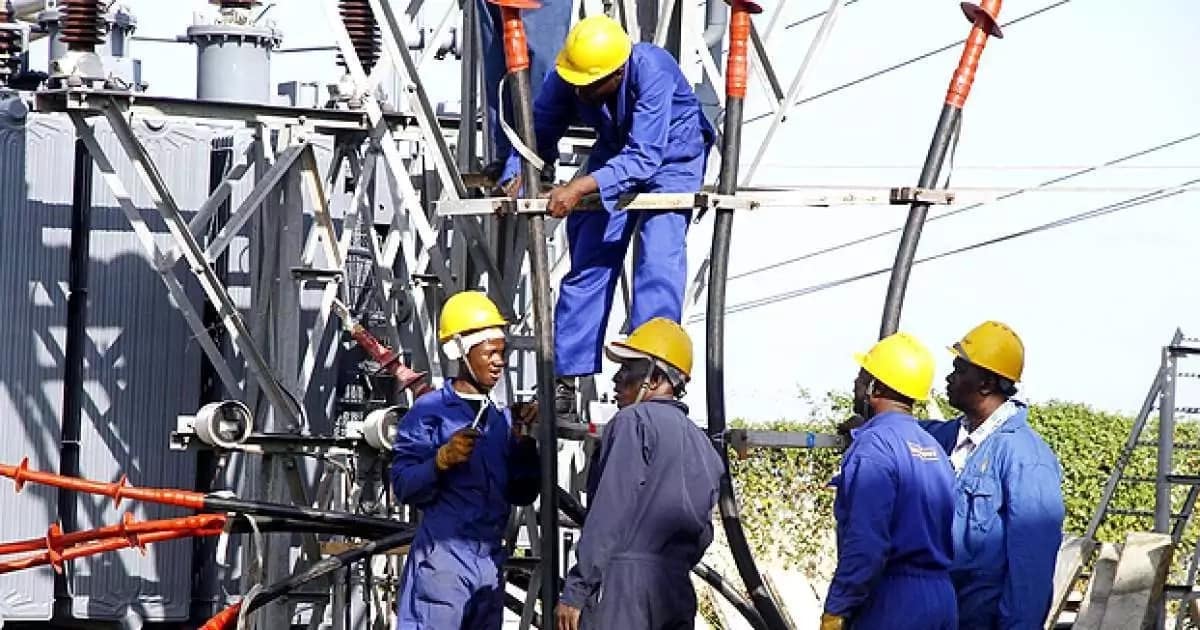Market Reassesses Kenya Power Balance Sheet And Policy Path
KPLC.NR shares fell 20% after FY2025 results showed revenue down 5.1% and profit down 18.7%. Markets eye KES=X stability, tariff resets, and rate moderation as key to restoring margins and narrowing the utility’s risk premium within two quarters.

Kenya Power’s FY2025 results triggered a material revaluation of its equity, with the share falling 20% after earnings revealed how tariff lag, foreign exchange exposure, and elevated borrowing costs eroded margins. Revenue declined 5.1% year on year to KSh 219.29 billion as moderation in regulated pricing and weaker foreign-currency cost pass-through offset higher electricity sales.
Net profit fell 18.7% to KSh 24.47 billion, reflecting a swing in finance costs to a KSh 4.72 billion loss from a prior gain following reversal of earlier FX valuation gains. Despite operational gains — unit sales rose 887 GWh and network efficiency improved to 78.79% — the company’s earnings remain highly sensitive to macro-financial variables beyond management control.
The mechanics behind the decline are structural. Kenya Power purchases a large share of its electricity under dollar-linked PPAs while collecting revenue in shillings under a regulated tariff. When the shilling (KES=X) stabilizes or strengthens, the FX-linked uplift embedded in end-user tariffs contracts, reducing nominal revenues even though dollar-denominated obligations persist. With the Central Bank Rate at 13% and Treasury yields exceeding 25%, financing costs remain prohibitive. The resulting interest burden magnifies the translation effects of a stable currency, compressing margins and revealing the fragility of the company’s financial structure in a high-rate environment.
Valuation metrics distort the picture. A market capitalization of roughly KSh 23.7 billion against KSh 24.5 billion of profit implies an abnormally low price-to-earnings multiple near 1x. This does not signal undervaluation but reflects investors pricing in recurring policy and FX risk. The sustainability of dividend payouts — proposed at KSh 1.00 per share — depends less on accounting profit and more on regulatory certainty and funding cost trends. The stock’s repricing corrects an earlier speculative rally, when a 150% year-to-date gain from a low base overstated balance-sheet repair.
Macro context provides both support and constraint. Kenya’s GDP is expanding at around 5.3%, helping sustain electricity demand, while inflation has moderated to near 6%. The shilling has stabilized around KSh 131 per USD, and official reserves near USD 12.1 billion — about five months of import cover — reduce immediate FX pressure. Yet domestic financing conditions remain tight. With the government crowding out credit at double-digit yields, Kenya Power’s cost of capital is structurally high. Unless policy delivers targeted refinancing, interest expense will continue to dilute the effect of operational efficiency gains.
The correction reflects investor re-evaluation rather than panic. On the Nairobi Securities Exchange (KPLC.NR), the stock’s beta to regulatory outcomes has intensified. The next phase depends on tariff adjustments by the Energy and Petroleum Regulatory Authority. A 10–15% upward reset within two quarters would restore 200–300 basis points of EBITDA margin and demonstrate that cost pass-through mechanisms are functional. In parallel, liability-management operations that extend debt maturity and increase local-currency borrowing would improve cash-flow predictability. The interplay between these fiscal and monetary levers will define whether the stock stabilizes or continues to trade at distressed multiples.
Regional parallels sharpen perspective. Nigerian and South African utilities that achieved credible, rules-based tariff regimes compressed credit spreads and equity risk premia despite weak macro backdrops. In markets where regulatory discretion persisted, equity values stayed chronically discounted. Kenya Power’s outcome will hinge on whether policymakers institutionalize tariff indexation and currency-risk hedging or continue case-by-case adjustments. Investors are now demanding policy coherence as the price for re-rating the stock into the investable frontier-market universe.
The forward test is quantifiable. Over the next two to four quarters, improvement will require three verifiable shifts: tariff execution that recovers at least 200 basis points of margin; trailing-twelve-month finance costs declining through rate normalization or tenor extension; and a measurable reduction in FX mismatch reflected in lower volatility of cash collections. If achieved, these outcomes could restore a stable valuation band and reduce the equity risk premium relative to the NSE Utilities Index. If missed, the current repricing will entrench Kenya Power among high-yield, high-volatility utilities where earnings are determined by regulation rather than demand.





